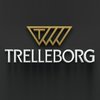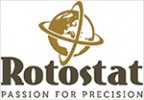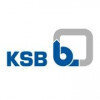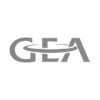Filter interviews by
Inductotherm Design Engineer Interview Questions and Answers
8 Interview questions
Gears can be made of various materials depending on the application and requirements.
Common materials include steel, cast iron, bronze, and plastic.
Steel gears are strong and durable, but can be noisy.
Cast iron gears are also strong and durable, but are quieter than steel.
Bronze gears are used in applications where low noise and high strength are required.
Plastic gears are lightweight and can be used in applicatio...
RPM can be changed by adjusting the speed of the motor or by using a gearbox.
Adjust the voltage or frequency of the power supply to the motor
Use a variable frequency drive to control the motor speed
Use a gearbox to change the speed of the output shaft
Change the size of the pulleys or gears in the system
Use a different motor with a different speed rating
To draw 3rd angle & 1st angle view, first understand the projection theory and then follow the conventions of each angle view.
Understand the projection theory and conventions of each angle view
Use proper scale and dimensions
Label all the important features
Show hidden lines and surfaces
Use appropriate line types and thickness
Check for accuracy and completeness
Revise and refine the drawing as needed
Four common heat treatment processes are annealing, quenching, tempering, and normalizing.
Annealing involves heating the material to a specific temperature and then slowly cooling it to relieve internal stresses and increase ductility.
Quenching is a rapid cooling process used to harden materials by forming a martensitic structure.
Tempering is a heat treatment process that involves reheating the quenched material t...
There are numerous materials used in engineering, each with unique properties and applications.
Metals: strong and durable, used in construction and machinery
Polymers: lightweight and flexible, used in packaging and consumer goods
Ceramics: heat-resistant and hard, used in electronics and construction
Composites: combination of materials, used in aerospace and sports equipment
Why we use them in specific: based on the...
First angle and third angle symbols are used in engineering drawings to indicate the orientation of the views.
First angle projection is commonly used in Europe and Asia, where the top view is placed below the front view.
Third angle projection is commonly used in North America, where the top view is placed above the front view.
The symbol for first angle projection is a triangle with the number 1 inside, while the s...
Welding joins two metal pieces by melting them together, brazing joins them with a filler metal at lower temperatures, and soldering joins them with an even lower melting point filler metal.
Welding involves melting the base metals and adding a filler material to create a strong joint, typically at high temperatures.
Brazing uses a filler metal with a melting point above 450°C but below the melting point of the base...
Types of gears include spur, helical, bevel, worm, rack and pinion. Types of bearings include ball, roller, plain, and fluid bearings.
Types of gears: spur, helical, bevel, worm, rack and pinion
Types of bearings: ball, roller, plain, fluid
Inductotherm Design Engineer Interview Experiences
2 interviews found
I applied via Approached by Company and was interviewed in Jun 2024. There was 1 interview round.
(7 Questions)
- Q1. First angle and third angle symbol
- Ans.
First angle and third angle symbols are used in engineering drawings to indicate the orientation of the views.
First angle projection is commonly used in Europe and Asia, where the top view is placed below the front view.
Third angle projection is commonly used in North America, where the top view is placed above the front view.
The symbol for first angle projection is a triangle with the number 1 inside, while the symbol...
- Q2. Welding symbols
- Q3. Types of gears and bearings
- Ans.
Types of gears include spur, helical, bevel, worm, rack and pinion. Types of bearings include ball, roller, plain, and fluid bearings.
Types of gears: spur, helical, bevel, worm, rack and pinion
Types of bearings: ball, roller, plain, fluid
- Q4. Four Heat treatment process name
- Ans.
Four common heat treatment processes are annealing, quenching, tempering, and normalizing.
Annealing involves heating the material to a specific temperature and then slowly cooling it to relieve internal stresses and increase ductility.
Quenching is a rapid cooling process used to harden materials by forming a martensitic structure.
Tempering is a heat treatment process that involves reheating the quenched material to a s...
- Q5. Welding,brazing and soldering difference between them.
- Ans.
Welding joins two metal pieces by melting them together, brazing joins them with a filler metal at lower temperatures, and soldering joins them with an even lower melting point filler metal.
Welding involves melting the base metals and adding a filler material to create a strong joint, typically at high temperatures.
Brazing uses a filler metal with a melting point above 450°C but below the melting point of the base meta...
- Q6. CSK bolt drawing
- Q7. Tpi and bsp dull form
I applied via Recruitment Consultant and was interviewed before Oct 2019. There was 1 interview round.
Interview Questionnaire
5 Questions
- Q1. All basic questions related to mechanics and geometric tolerances, about motor pump and pneumatics selection.
- Q2. How to change rpm?
- Ans.
RPM can be changed by adjusting the speed of the motor or by using a gearbox.
Adjust the voltage or frequency of the power supply to the motor
Use a variable frequency drive to control the motor speed
Use a gearbox to change the speed of the output shaft
Change the size of the pulleys or gears in the system
Use a different motor with a different speed rating
- Q3. Material use in gears?
- Ans.
Gears can be made of various materials depending on the application and requirements.
Common materials include steel, cast iron, bronze, and plastic.
Steel gears are strong and durable, but can be noisy.
Cast iron gears are also strong and durable, but are quieter than steel.
Bronze gears are used in applications where low noise and high strength are required.
Plastic gears are lightweight and can be used in applications wh...
- Q4. How many material do you know ? And why we use them in specific?
- Ans.
There are numerous materials used in engineering, each with unique properties and applications.
Metals: strong and durable, used in construction and machinery
Polymers: lightweight and flexible, used in packaging and consumer goods
Ceramics: heat-resistant and hard, used in electronics and construction
Composites: combination of materials, used in aerospace and sports equipment
Why we use them in specific: based on their pr...
- Q5. Draw 3rd angle & 1st angle view
- Ans.
To draw 3rd angle & 1st angle view, first understand the projection theory and then follow the conventions of each angle view.
Understand the projection theory and conventions of each angle view
Use proper scale and dimensions
Label all the important features
Show hidden lines and surfaces
Use appropriate line types and thickness
Check for accuracy and completeness
Revise and refine the drawing as needed
Interview Preparation Tips
Top trending discussions






Interview questions from similar companies

Senior Engineer Interview Questions & Answers
Valmont Structuresposted on 30 Jun 2022

(1 Question)
- Q1. General discussion of your work history
(1 Question)
- Q1. Stream technical question
General work related assignment
Interview Preparation Tips

(2 Questions)
- Q1. What is QA and QC
- Ans.
QA stands for Quality Assurance and involves processes to prevent defects, while QC stands for Quality Control and involves processes to identify defects.
QA focuses on preventing defects in the product or service being delivered
QC focuses on identifying defects in the product or service being delivered
QA involves processes such as reviews, audits, and process improvements
QC involves processes such as testing, inspectio...
- Q2. Welding details
Interview Preparation Tips

I applied via Naukri.com and was interviewed in Jun 2024. There were 3 interview rounds.
Solving questions paper
CAD &Solid work test
(2 Questions)
- Q1. Project Handling experience
- Q2. Salary negotiation

I applied via Recruitment Consultant and was interviewed before Sep 2020. There were 3 interview rounds.
Interview Questionnaire
2 Questions
- Q1. Previous company work experience
- Ans.
In my previous role, I led a team in developing scalable software solutions, enhancing system performance and user experience.
Led a team of 5 engineers to develop a cloud-based application that improved data retrieval speed by 30%.
Implemented Agile methodologies, resulting in a 25% increase in project delivery speed.
Collaborated with cross-functional teams to integrate user feedback, enhancing product usability.
Mentore...
- Q2. Plans in next 5 years
- Ans.
I plan to continue developing my technical skills and taking on leadership roles within the company.
Pursue advanced technical certifications
Lead cross-functional teams on complex projects
Mentor junior engineers
Explore opportunities for innovation and process improvement
Collaborate with senior management to set strategic goals
Interview Preparation Tips

(2 Questions)
- Q1. Your job related
- Q2. Last job function
- Ans.
Designing and implementing software solutions for a tech company
Developing new features for software products
Troubleshooting and debugging code
Collaborating with team members on projects

I applied via Walk-in and was interviewed before Jul 2023. There were 2 interview rounds.
(2 Questions)
- Q1. Section pipeline. Drawing
- Q2. Job performance.
(2 Questions)
- Q1. Your job experience
- Ans.
I have over five years of experience in civil engineering, focusing on project management, design, and construction supervision.
Managed multiple infrastructure projects, including a $2 million bridge construction.
Conducted site assessments and feasibility studies for new developments.
Collaborated with architects and contractors to ensure design integrity.
Utilized AutoCAD and Civil 3D for drafting and design work.
Oversa...
- Q2. Your job responsibilities
- Ans.
As a Civil Engineer, I managed projects, ensured compliance with regulations, and collaborated with teams to deliver quality infrastructure.
Conducted site assessments to evaluate project feasibility and environmental impact.
Designed and drafted plans for infrastructure projects, such as bridges and roads, using CAD software.
Managed project timelines and budgets, ensuring resources were allocated efficiently.
Collaborate...
Interview Preparation Tips

I applied via Walk-in and was interviewed in Oct 2021. There were 3 interview rounds.

(2 Questions)
- Q1. Telling about technical
- Q2. About programming and communication skills
Given to decode the numbers
Interview Preparation Tips
- Programind designing
Export in fanuc and semens programing

I applied via Recruitment Consulltant and was interviewed before Oct 2021. There were 4 interview rounds.

(2 Questions)
- Q1. Tell me about yourself?
- Q2. Your family background
(1 Question)
- Q1. GD and T,Write a program what you have done in your past company.
(1 Question)
- Q1. This will be final round from GM ,he will ask you about your past experience technical questions, about company.
Interview Preparation Tips
Inductotherm Interview FAQs
Tell us how to improve this page.
Inductotherm Interviews By Designations
- Inductotherm Design Engineer Interview Questions
- Inductotherm Senior Sales Engineer Interview Questions
- Inductotherm Deputy Manager 1 Interview Questions
- Inductotherm Technician Interview Questions
- Inductotherm Area Sales Head Interview Questions
- Inductotherm Production Engineer Interview Questions
- Inductotherm Mechanical Engineer Interview Questions
- Inductotherm Import Purchase Interview Questions
- Show more
Interview Questions for Popular Designations
- Mechanical Engg. Design Interview Questions
- Senior Design Engineer Interview Questions
- Electrical Design Engineer Interview Questions
- Structural Design Engineer Interview Questions
- Piping Designer Interview Questions
- Junior Design Engineer Interview Questions
- Auto CAD Designer Interview Questions
- Trainee Design Engineer Interview Questions
- Show more
Overall Interview Experience Rating
based on 1 interview experience
Difficulty level
Duration
Design Engineer Interview Questions from Similar Companies
Inductotherm Design Engineer Reviews and Ratings
based on 4 reviews
Rating in categories
|
Service Engineer
48
salaries
| ₹1.5 L/yr - ₹8 L/yr |
|
Senior Engineer
31
salaries
| ₹5 L/yr - ₹11 L/yr |
|
Engineer
20
salaries
| ₹3.1 L/yr - ₹7.5 L/yr |
|
Purchase Engineer
18
salaries
| ₹1.8 L/yr - ₹6 L/yr |
|
Design Engineer
16
salaries
| ₹2.2 L/yr - ₹4.3 L/yr |

Trelleborg

PMT Machines

SPX Flow Technology

MITA
- Home >
- Interviews >
- Inductotherm Interview Questions >
- Inductotherm Design Engineer Interview Questions

















